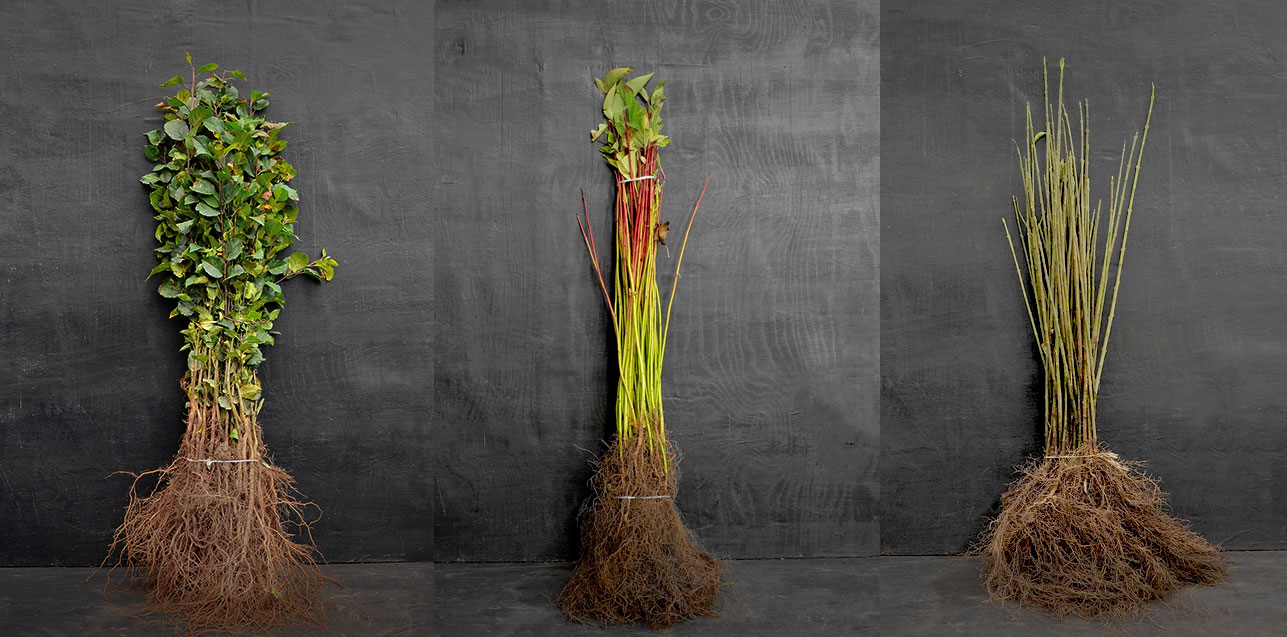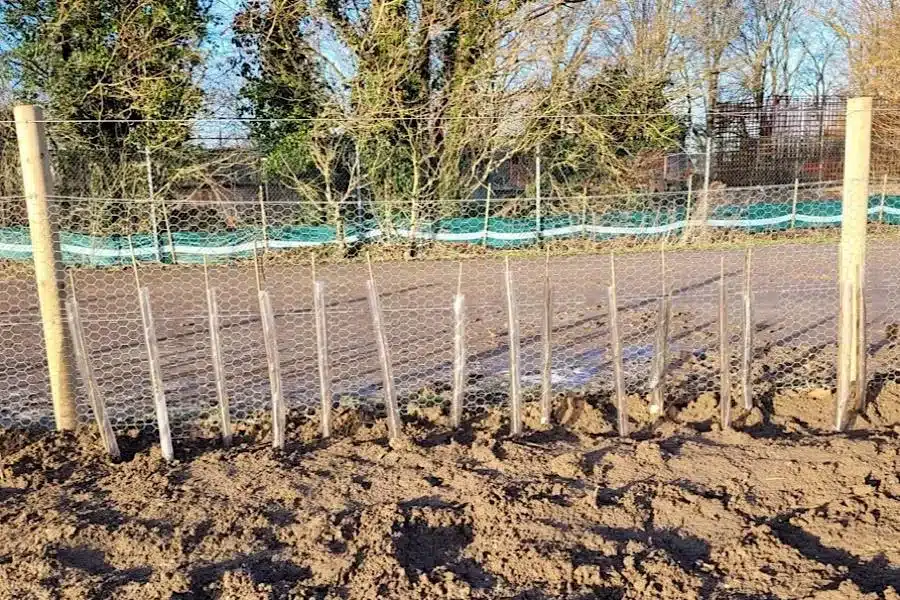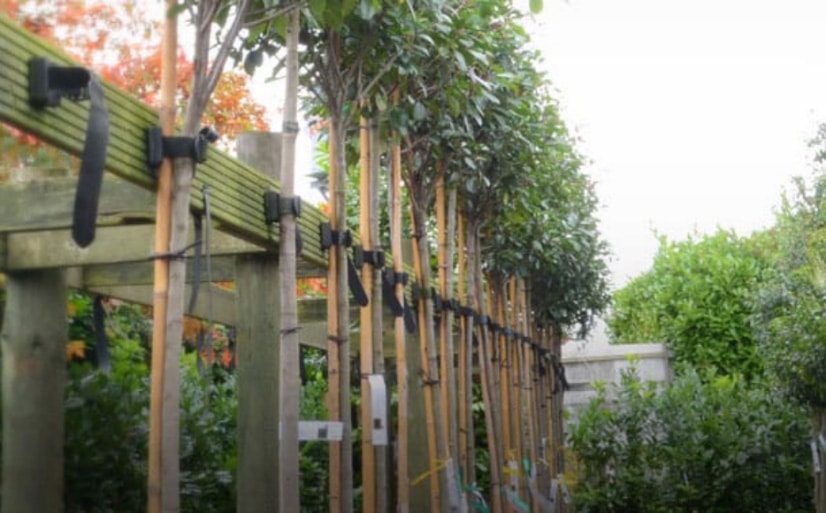In this guide, we will provide instructions on planting bare root hedging, including a detailed explanation of the ‘notch planting’ technique for smaller plants. You’ll also find our recommended care and maintenance practices to maximise the survival and successful establishment of your new bare root hedging!
Storage
Bare Root plants are grown in a field and then lifted without soil around their roots during the dormancy period, which generally runs from November to March. If you don’t intend to set the hedge immediately upon arrival, we recommend that you leave the plants in their bags and store them in a cool, frost free shed or garage. This will help to protect them from frost and wind. Just make sure to sprinkle a little bit of water on the roots every couple of days to maintain adequate moisture!
If you are unable to plant your bare root plants within one week of receiving them, we recommend that you dig a trench in a sheltered part of your garden and heel the plants into the soil to cover the roots so that they are protected. When you are ready to plant, simply lift the plants from the soil on the day that you need them.
Planting
When planting smaller bare root plants we recommend that you follow the ‘notch planting’ technique as it is a quick process that avoids digging huge planting pits that require laborious backfilling. When ‘notch planting’ you should…
1. Make sure that the roots are moist.
2. Open up a slit in the soil, push a spade few inches deep and move back and forward.
3. Slide the root of your bareroot plant into the slit, up to the nursery soil mark.
4. ‘Heel in’ tight to ensure good soil/root contact, you should have to tug the plant quite hard to remove it.
Don’t remove the hedging plants from the box or bag before you plant. Exposure to sun or drying winds may lead to root desiccation and eventual failure.
Protection
To give your new hedge the best start, we recommend using canes and guards. These accessories offer crucial protection against common predators like voles, rabbits, and deer. Beyond protection, they also provide essential support for young plants, encouraging upright growth. This support plays a significant role in boosting their survival and successful establishment.
A 5% overall failure rate is generally considered acceptable with bare root planting. When you’re planning how many trees to plant, it’s a good idea to factor in this potential rate to ensure you achieve your desired coverage.
Aftercare
After completion of planting, it is important that you continue to care for the plants. Adding a layer of mulch, such as wood chips, around your trees is a great way to reduce weed competition and help the soil retain moisture. For continued healthy and vigorous growth, we recommend topping up the mulch annually in the spring. By maintaining this practice in the early years following planting, you could see as much as one-third extra growth per year!
Frequently Asked Questions
We recommend using 5 plants per metre when using our 40-60cm bare rooted hedging plants. The best way is to plant in a double staggered row.
Bare rooted plants should only be planted once they have become fully dormant, which in the UK is between November to March. This can however move by a few weeks depending on the weather.
Good soil to root contact, which is achieved by heeling in the plants firmly.
You can incorporate compost and soil improver in the planting area, one of the most efficient methods to help bare rooted plants grow is to plant in conjunction with a mycorrhizal fungi such as Rootgrow.
Yes. King and Co recommend watering in the plants once planted to settle the soil. Usually the hedge will not need additional watering until late March/April when the weather warms up and the ground begins to dry out.
King and Co are Plant Healthy Certified meaning our plants are sourced, grown and handled in the most careful and bio-secure manner.
Bare root hedging is typically a lower cost solution to creating a new hedge or infilling an existing hedge as opposed to using container grown or rootballed plants.






